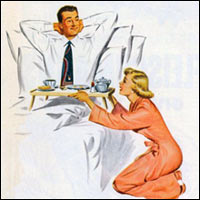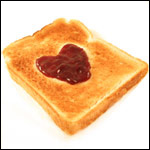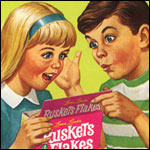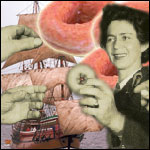
The History of Coffee
By James GriersonPart I - Africa and Arabia
The coffee plant originates from the highland forests of Ethiopia. It is believed that the first plants were found growing wild in the region of Kaffa, where coffee derives its name. A popular legend tells of a goat herder named Kaldi. One day he noticed his goats behaving in a strange manner. They were full of energy, playfully chasing each other and bleating loudly. He noticed they were eating red berries from the bushes nearby. Feeling tired and slightly curious, Kaldi decided to try some of the berries. To his delight his fatigue quickly faded into a fresh burst of energy.
Kaldi was so impressed by the berries, that he filled his pockets with them and ran home to show his wife. "They are heaven-sent" she declared, "You must take them to the Monks in the monastery". At the monastery, Kaldi told the Abbot how these berries had had a miraculous energizing affect on his goats. The Abbot hurled the berries into the fire and proclaimed them as the "Devil's work".
Within minutes the berries started to smoke and the monastery was filled with the heavenly aroma of roasting beans. The other Monks quickly gathered to see what the commotion was. One Monk swiftly raked the beans from the fire and extinguished the embers by stamping on them. The rich smell of coffee obviously agreed with the Abbot's nose as he ordered the Monk to place the now crushed beans into a jug and cover it with hot water to preserve their divine goodness. He then took a sip from the jug and sampled the rich and fragrant brew that is coffee. From that day on the Monks vowed to drink coffee daily to keep them awake during the long, nocturnal devotions.
No one is exactly sure when coffee was discovered. There is evidence to suggest that coffee beans were used to make a primitive "energy bar" before they were actually brewed as a hot drink. Sometime between 575AD and 850AD, a nomadic mountain tribe known as Galla, used to mix ground coffee with ghee. These bars were consumed by the tribe's warriors to heighten aggression and increase their stamina during battle. To this day, these bars are still eaten in Kaffa and Sidamo (Ethiopia).
Some authorities claim that coffee originated from the Arabian Peninsula rather then Ethiopia, stating that coffee was cultivated in Yemen from around 575AD. An Islamic legend tells of how Sheikh Omar discovered coffee growing wild while living as a recluse near the port of Mocha (Yemen). He is said to have boiled some berries and discovered the stimulating effect of the infusion. He then administered the brew to locals who were stricken with a mysterious illness and cured them. However it is more likely that coffee spread to Yemen through Sudanese slaves. These slaves are thought to have eaten coffee beans to help them stay alive as they rowed ships across the Red Sea between Africa and Arabian Peninsula.
Evidence suggests that coffee was probably not enjoyed as a beverage until around the 10th Century. It is at this time that the oldest known documents describing the beverage coffee were written. Two Arabian philosophers: Rhazes (850-922AD), and Avicenna of Bukham (980-1037AD); both refer to a drink called "bunchum", which many believe is coffee.
As the Quran forbids Muslims from drinking alcohol, the soothing, cheering and stimulating effects of coffee made it a popular substitute in Islamic countries for wine. The first coffeehouses are said to have been established in Mecca (Saudi Arabia). Known as the Kaveh Kanes, they were public places where Muslims could socialize and discuss religious matters.
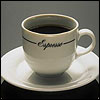
By the late 16th Century, the use of coffee was widespread throughout the Arabia, North Africa and Turkey. The nutritional benefits of coffee were thought to be so great that coffee was considered as important as bread and water. So much so that a law was passed in Turkey making it grounds for divorce if a husband refused his wife coffee.
Wherever Islam went, coffee was sure to follow. With the expansion of the Ottoman Empire, coffee quickly spread to the Eastern Mediterranean. However, it is believed that no coffee seed sprouted outside Africa or Arabia until 17th Century, as coffee beans exported from the Arabian ports of Mocha and Jidda, were rendered infertile by parching or boiling. Legend has it that this changed when a pilgrim named Baba Budan, smuggled fertile coffee beans out of Mecca, strapped to his stomach. Returning to his native India he successfully cultivated the beans in Mysore.
Part II - Spread of Coffee to Europe

According to many accounts, a group of Christian clerics tried to have coffee banned before it had become widely available. They came to Pope Clement VIII (1535-1605) claiming that coffee was for Satan's followers, and that Christians who drank it might lose their souls to the Devil. But before Pope Clement would ban coffee he insisted on tasting it. After drinking his first cup, the Pope was so impressed with the flavor that he reasoned that such a drink could not possibly be the work of Satan and instead declared that coffee should be baptized to make it a true Christian drink.
The first person recorded to have brewed coffee in England was an international student named Nathaniel Conopios from Crete, who was studying at Balliol College, Oxford. This simple act, which happened in May 1637, was recorded by both scholar John Evelyn and historian Anthony Wood. Shortly afterwards Conopios was expelled from college, but his influence had a lasting effect on Oxford. It was in Oxford that the first English coffeehouse was opened in 1650 by Jacob, a Lebanese Jew. Even though Jacob moved to London a few years later to repeat his success, he had begun a trend that saw many more coffeehouses open in Oxford during that decade.
The most significant of these coffeehouses was the one opened by Arthur Tillyard in 1655. Tillyard's coffeehouse became a meeting place for a group who were known as the Oxford Coffee Club. This group was made up of Oxford's leading scientists, including Sir Robert Boyle, and their students, who would meet to discuss their theories and research and share ideas. It is from the Oxford Coffee Club which the world famous Royal Society, one of the leading scientific societies in the world, evolved from.
The first coffeehouse in London was opened in 1652 by an Armenian man named Pasqua Rose. Originally brought to London as a servant by the merchant Daniel Edwards, Rose served coffee each morning to Edwards' house guests. Curiosity about the new drink soon spread through Edwards' friends, and the number of visitors to Edwards' house steadily grew over time. There was so much excitement created by Rose's brew that Edwards eventually decided to financially back Rose in opening a coffeehouse at St. Michael's Alley in Cornhill. As with Oxford, the idea soon took off, and by 1715 there were as many as 2,000 coffeehouses around London.
One of the world's largest insurance companies, Lloyds of London, started as a coffeehouse on Tower Street in 1688. Opened by Edward Lloyd, it primarily served seafarers and merchants. Lloyd would circulate amongst his customers creating a list of what ships were carrying, their schedules, and their insurance needs. This list drew underwriters to his coffeehouse to sell insurance to those who needed it and merchants so they could keep track of the ships.
It is thought that the custom of tipping originated in English coffeehouses. There would often be a small boxes hung near the counter in establishments with the words "To Insure Promptness" (TIP) inscribed on them. Customers would drop a coin in the box to encourage swift service.
The early growth of coffeehouses was largely due to support by doctors promoting coffee for its supposed healing abilities. Before the introduction of coffeehouses, there was a widespread problem with public drunkenness as beer was consumed with almost every meal. But with public knowledge of the health benefits of coffee, and with coffee being significantly cheaper then beer, coffeehouses began to replace the tavern as the meeting place of choice. Needless to say, tavern owners were not going to let their profits dwindle without a fight, and many of the most aggressive attacks against coffee came from them. They claimed that coffee was an Arabic drink not suitable for well-mannered Christian men, unlike beer which had been brewed by Monks' for centuries.
Tavern owners were not the only group to attack coffee. Women upset that their men spent more time at coffeehouses than in their homes, soon started to protest. In 1674, the 'Women's Petition against Coffee' was published. In this document, women protested that coffee reduced the male sperm count and would lead to a decline in the population: "coffee makes a man as barren as the dessert out of which this unlucky berry has been imported; that since its coming the offspring of our mighty forefathers are on the way to disappear as if they were monkeys and swine." It was understandable that women were aggrieved. At the time, they were banned from setting foot in a coffeehouse. The "Men's Answer to the Women's Petition against Coffee" was published later that year. The document defended coffee claiming that women should be thankful for coffee, as it was in fact an aphrodisiac.
Part III - Colonization of Coffee
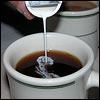
It was the Netherlands who took an early lead in this race. In 1616, Dutch spies successfully managed to smuggle a coffee plant out of Mocha (Yemen). At first, they were only involved in small scale cultivation. This changed in 1658 when they defeated the Portuguese to take control of Sri Lanka. Very soon coffee plantations spread all over Sri Lanka and into Southern India. Then in 1699, the Dutch started production in Indonesia, when cuttings were successfully transplanted from Malabar (India) to Java.
Without help from the Dutch, the other Superpowers would not have got out of the starting blocks. By 1706, the first coffee beans from Java had reached Amsterdam along with a coffee plant for the Botanical Garden. From this plant, a number of successful cuttings were made. These new plants soon found their way into various botanical gardens throughout Europe as they were given as gifts to visiting dignitaries.
One such plant was given to King Louis XIV of France in 1714, by the Burgomaster of Amsterdam. The plant was re-homed in le Jardin des Plantes in Paris. Several years later, a French Naval Officer named Mathieu Gabriel de Clieu, while on leave from his station in Martinique, asked for the King's permission to take a cutting of this plant back with him. Unfortunately for him, the King refused his request. Convinced that the Caribbean would be an ideal place to cultivate coffee, de Clieu led a daring moonlight raid on the Jardin des Plantes to secure a cutting.
In 1723, de Clieu began his journey back to Martinique with his newly procured coffee cutting in tow. He kept the shoot in a glass cabinet which he would bring up to the deck each day so it could be warmed by the sun. If de Clieu had thought that the hard part of his mission was over, he would have been wrong. During the journey, one of the men on board (allegedly with a Dutch accent) tried to wrestle the plant off of de Clieu, managing to break a side-shoot in the process. The crew had to fend off an attack by pirates which lasted nearly a whole day. A storm descended that shattered the glass cabinet and the portable water supply ran so low that de Clieu had to share his water ration with the plant.
Finally, de Clieu returned to Martinique where he successfully cultivated the coffee plant. Some twenty months later, de Clieu had his first harvest which he distributed among the island's doctors and other intellectuals. As luck would have it, the cocoa plants on the island were doing badly after a recent volcanic eruption, so coffee was soon adopted by the locals. Within three years, coffee plantations spread all over Martinique and to the neighboring islands of St. Dominique and Guadeloupe. Coffee production was so successful in the Caribbean that King Louis XIV forgave de Clieu for his earlier transgression and made him governor of the Antilles.
The coffee plant had become a very desirable object. In 1727, the Brazilian government decided it was time they joined the coffee market. Using the guise of an intermediary in a boundary dispute between the French and Dutch in the Guianas, Brazil sent Lieutenant Colonel Francisco de Mello Palheta on a mission to steal a coffee plant from the French. Using his charm and charisma, Palheta befriended the governor of French Guiana's wife. Once the dispute was resolved, the governor's wife presented Palheta with a farewell gift, a coffee cutting concealed in a bouquet of flowers. From this scant shoot grew the world's largest coffee empire.
The British did not seriously compete in the coffee race until 1796 when they took control of Sri Lanka from the Dutch. With the arrival of the British, even more land was cleared for coffee plantations. So much so that the relatively small island of Sri Lanka briefly became the world's largest coffee producer in the 1860s. However in 1869, a lethal fungus known as coffee rust arrived on the island. This fungus causes premature defoliation of a coffee plant, seriously weakening its structure and reducing its yield of berries. Since rust was not considered to be a serious disease, the British continued to clear more land for coffee plantations during the next decade. It was not until 1879 that they realized the seriousness of the situation. Unfortunately by then it was too late. The productivity of the plants had declined so greatly that they were no longer economically viable.
Luckily for the British, a successful marketing campaign led by the British East India Company for tea entitled "the cup that cheers" had laid the foundations for tea to become the British national drink. Between 1700 and 1757, the average annual tea imports into Britain more than quadrupled and consumption continued to grow steadily for the rest of the century. So when coffee rust devastated the coffee plantations of Sri Lanka, and later India, production simply switched and the coffee plants were uprooted and replanted with tea. Although Britain continued to cultivate coffee on a limited amount of colonial land, mostly in Jamaica, Uganda and Kenya, by the end of the 19th Century tea had surpassed coffee as their beverage of choice.
Part IV - Commercialization of Coffee
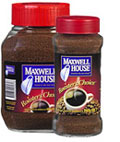 For many connoisseurs, the period from the mid-19th Century to the late 20th Century is the "Dark Age" of coffee. During this era, coffee lost its Middle-Eastern mystical charm and became commercialized and, quite frankly, ordinary.
For many connoisseurs, the period from the mid-19th Century to the late 20th Century is the "Dark Age" of coffee. During this era, coffee lost its Middle-Eastern mystical charm and became commercialized and, quite frankly, ordinary.When coffee was first introduced into Britain during the 17th Century, it was a drink enjoyed by every social class. While the rich would enjoy coffee almost ceremonially in their social clubs, the poor saw coffee as an essential nutrient - a hot drink to replace a hot meal or hunger suppressant. With the advancement of technology, it was only a matter of time before large companies formed to take advantage of the coffee commodity.
Traditionally, coffee was roasted in the home or in the coffeehouse. A practice imported from the Middle-East was to simply stir-fry green beans in an iron pan over a fire until brown. Some coffeehouses used a more sophisticated method of a cylindrical unit hung above a fire with a handle to rotate the beans inside. Both these methods were only capable of roasting small batches of coffee - a couple of kilos or several pounds at most - which ensured that the coffee was always fresh.
With the onset of the industrial revolution and mechanization, coffee roasting technology soon improved. Commercial coffee roasters were being invented which were capable of roasting much larger batches of coffee. It was now possible for the few to meet the coffee needs of the masses.
It was in the United States where coffee first began to be commercialized. In 1865, John Arbuckle marketed the first commercially available packages of ground, roasted coffee. His brand, "Ariosa", was sold over a far larger area then any other coffee roaster. Instead of being confined to a small area close to the roasting factory, Arbuckle was able to establish his coffee as a regional brand. Others soon followed suit and, by World War I, there were a number of regional roasters including companies such as Folgers, Hill Brothers, and Maxwell House. These companies offered customers consistent quality and convenient packaging for use in the home, but at a price: freshness. It could be several weeks, or even months, before the end product would reach the customer.
One approach to prolonging the freshness of roasted coffee was to glaze it with a glutinous or gelatinous matter. After the coffee beans had been roasted, a glaze would be poured over them which would form a hard, protective barrier around the bean. One such glaze patented by John Arbuckle in 1868, consisted of using: a quart of water, one ounce of Irish moss, half an ounce of isinglass, half an ounce of gelatin, one ounce of white sugar, and twenty-four eggs, per hundred pounds of coffee. Arbuckle experimented with many different glazes over the years, eventually settling on a sugar based glaze. In fact, Arbuckle became such a prolific user of sugar that he entered into the sugar business rather then give a profit to others for the huge quantities he required.
So why were customers willing to buy this coffee? Once ground, coffee quickly loses its flavor and therefore should be consumed as soon as possible (at the very latest within 48 hours). But this was the age of the brand, where consistency ruled king over quality. Local roasters would often produce excellent coffee, but they could also produce foul coffee, occasionally containing a number of adulterations. Customers wanted to trust what they were buying. They wanted their coffee to taste exactly the same, time and time again.
Worse was to come to the brew known as coffee. As regional roasters grew into national roasters and then into international roasters, their pursuit of profit intensified. Traditionally, coffee came from the 'arabica' variety of coffee bush. But in the 1850s, the French and Portuguese began to cultivate a different variety of coffee bush, known as 'robusta', on the west coast of Africa between Gabon and Angola. Robusta beans were (and still are) cheaper then arabica beans as they are easier to grow and have an inferior flavor. Coffee roasters looking to minimize their production costs started blending robusta beans with arabica beans in increasing quantities. They also used shorter roast times to reduce weight loss and thus stopped the coffee from fully developing its complex flavor.
However the lowest point for coffee came with the introduction of instant coffee - a drink bearing little resemblance in taste to actual coffee. The first commercially produced instant coffee, called 'Red E Coffee', was invented by George Constant Washington, an English chemist living in Guatemala. It was marketed in 1909.
It's the Nestle Company that is generally assumed to have invented instant coffee. In 1930, Nestle was approached by the Instituto do Cafe (Brazilian Coffee Institute) to help find a solution to their coffee surpluses. They believed that a new coffee product that was soluble in hot water, yet retained its flavor, would help stimulate world coffee sales. After seven years of research and frequent tasting, scientist Max Mortgenthaler finally achieved their desired results and, on 1st April 1938, Nescafe was launched, first in Switzerland and then later in Britain.
With the coffee industry focused on price rather then quality, it was little wonder that coffee sales became stagnant. Coffee drinking was now more about a caffeine fix rather then about savoring the taste. It was something to be gulped during a break from work, rather than a treat to be enjoyed over conversation or while reading the newspaper. Unsurprisingly the younger generations born in the 70s and 80s turned their back on bitter coffee, preferring sugary soft drinks such as Coca Cola and Pepsi for their caffeine kicks.
Part V - Specialty Coffee
 With the large multi-national coffee companies focused purely on coffee as a commodity rather then a drink to be savored, it allowed a new sector to emerge in the coffee industry: specialty coffee. Specialty coffee was nothing new, rather the opposite. It stripped coffee making back down to the grass roots: pure Arabica beans, roasted long enough for the coffee to fully develop all its characteristics and flavors.
With the large multi-national coffee companies focused purely on coffee as a commodity rather then a drink to be savored, it allowed a new sector to emerge in the coffee industry: specialty coffee. Specialty coffee was nothing new, rather the opposite. It stripped coffee making back down to the grass roots: pure Arabica beans, roasted long enough for the coffee to fully develop all its characteristics and flavors.During the "Dark Age" of coffee there was still excellent coffee available, if you knew where to look for it. A number of small cafes and shops continued to trade, sourcing and roasting high quality Arabica beans. These outlets were typically run and frequented by immigrants (usually Arabs, Turks, Greeks and Italians), far from the mainstream.
All this began to change in the 1960s, with the post World War II "Baby Boomers" coming into adulthood. Many of this generation were keen not to follow in their parents footsteps, preferring to act in a more bohemian way. For them, these cafes and shops were an ideal place to meet, read poetry, take drugs and experience alternative culture.
One such coffee shop in Berkeley (California) is widely credited as being the main inspiration on the emergence of the specialty coffee sector. Peet's Coffee & Tea store, opened in 1966 by Alfred Peet (dubbed the 'grandfather of specialty coffee') and enthused a number of its customers, who later became key players in the specialty sector. Peet, an immigrant from Alkmaar (Holland), had developed a distinctive style of roasting coffee from working in his family's coffee and tea business. After immigrating to California, aged thirty-five, he opened his shop employing his artisan coffee roasting techniques to build a loyal customer base. Peet's coffee was so loved that he even had his own set of groupies: the 'Peetniks'.
Two of Peet's most important customers (historically) were a couple of Seattle coffee lovers named Jerry Baldwin and Gordon Bowker. In 1971, after tasting Peet's fine brews, they were inspired to open their own coffee shop back in Seattle called Starbucks. Starbucks opened as a bean-only-store, steadily building a loyal customer base during the 70s and early 80s through its fine Arabica beans and darker roasts.
In 1984, the director of retail operations and marketing, Howard Schultz, tried to persuade Baldwin and Bowker to open the first Starbucks coffeehouse. Schultz had just returned from a trip to Milan, where he had noticed the existence of coffeehouses on almost every block. These were not just places to enjoy great espresso coffee, but also served as meeting places. Schultz was keen to recreate this kind of coffeehouse in America, but Baldwin and Bowker rejected Schultz's plans as they were unwilling to get into the restaurant business.
Undeterred, Schultz left Starbucks in 1985 to open his own coffeehouse, Il Giornale. Still using Starbucks coffee beans to make espresso drinks, Il Giornale proved extremely popular with the Seattle public. So popular, in fact, that in 1987, Schultz was able to buy Starbucks from Bowker and Schultz. Changing Il Giornale's name to Starbucks, Schultz began to rapidly expand, opening over 1,000 stores in a decade.
The story of the first British specialty coffeehouse also involves Alfred Peet. In 1995, Scott and Ally Svenson wanted to open a coffeehouse in Covent Garden, London. Their background was in marketing and design and, even though they were originally from Seattle, they did not know much about coffee. This is why they approached Steven Macatonia and Jeremy Torz of Union Coffee Roasters. Steven and Jeremy had fallen in love with coffee while working at Peet's in California. On their return home they decided to open their own roasting outlet and were soon supplying places such as the River Cafe, the Caprice, and the Ivy.
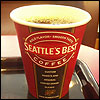
The popularity of coffeehouses has been phenomenal. Almost every high street in Britain has a least one coffeehouse now. Words such as espresso, cappuccino and cafe latte are commonplace. In fact the price of a cafe latte is now one of the products that the British government uses to measure inflation. Market analyzers believe that the success of the coffeehouse is not solely due to the coffee they serve, but the atmosphere in which it is served. Coffeehouses in Britain in the 1990s were a break from convention. In the consumerist landscape of the high-street, coffeehouses represented a place to relax. Customers were encouraged to take their time over their coffee; sit on big comfy sofas; offered the daily newspapers to read; allowed to idle the afternoon away watching the world go by. In other words, coffeehouses had returned to playing their original role in society, as they had done when they first arrived in Britain back in 17th Century.
The growth of these coffeehouses has helped to heighten the public's awareness of the specialty coffee sector. Increasingly, individuals are looking to have a slice of the coffeehouse in their own home, investing in espresso makers and other coffee accessories. Coffee is now widely available from a multitude of origins, roasted to differing degrees and ground to your requirement. In short, the "Dark Age" of coffee is well and truly over.
About The Author
James Grierson is the owner of Galla Coffee, a UK online retailer of designer coffee accessories. Through the Coffee Knowledge section of his website he aims to help people understand more about coffee and give them tips on how to make great tasting coffee in their home.
The editorial content above may not be reproduced without the written permission of
Home | About | Contact | Breakfast Recipes | The Cereal Project | Site Index | Food Charities | Blog
©2025 MrBreakfast.com
©2025 MrBreakfast.com



